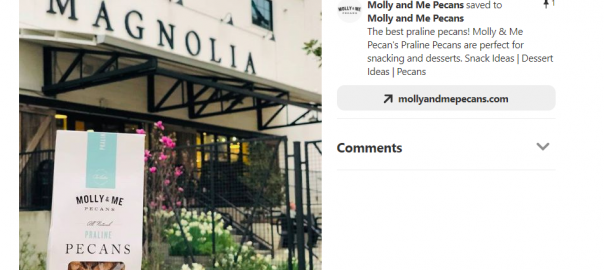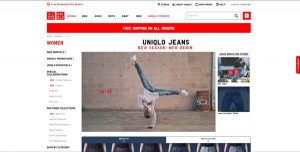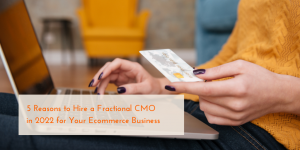— May 7, 2019
When Pinterest first launched back in 2010, it was the go-to place for women to browse and pin the latest fashion, decor, and meal planning trends. Although it has fewer users than other social media platforms, Pinterest is emerging as a leader for ecommerce. For example, it’s the second largest source of social media traffic to Shopify stores.
As the platform’s grown and evolved, so too has its features and capabilities. Women still make up the majority of users —in fact, 80% of users are women — but Pinterest is now a place for ecommerce businesses to interact with users and generate more sales for their businesses. If you can master Pinterest for ecommerce, there’s a huge opportunity to increase traffic to your site and sales.
If you’re ready to upgrade your marketing strategy to compete with other retailers in your niche, now is the time to figure out how to use Pinterest for ecommerce. Here are five ways to use Pinterest to make it easier for your audience to find you and ultimately grow your business.
Why use Pinterest for ecommerce
Pinterest for ecommerce is an attractive opportunity because the average sales order is $ 50 — which is higher than any other social media platform with a marketplace. Plus, since Pinterest has over 250 million active monthly users, the fact that 93% of users use the platform to plan their purchases bodes well for growing your revenue.
One of the biggest benefits with Pinterest for ecommerce is it simplifies the shopping experience. For example, if a user’s looking for ideas for a new pair of running shoes, they do a quick search and scroll through the results until they find what they’re looking for.
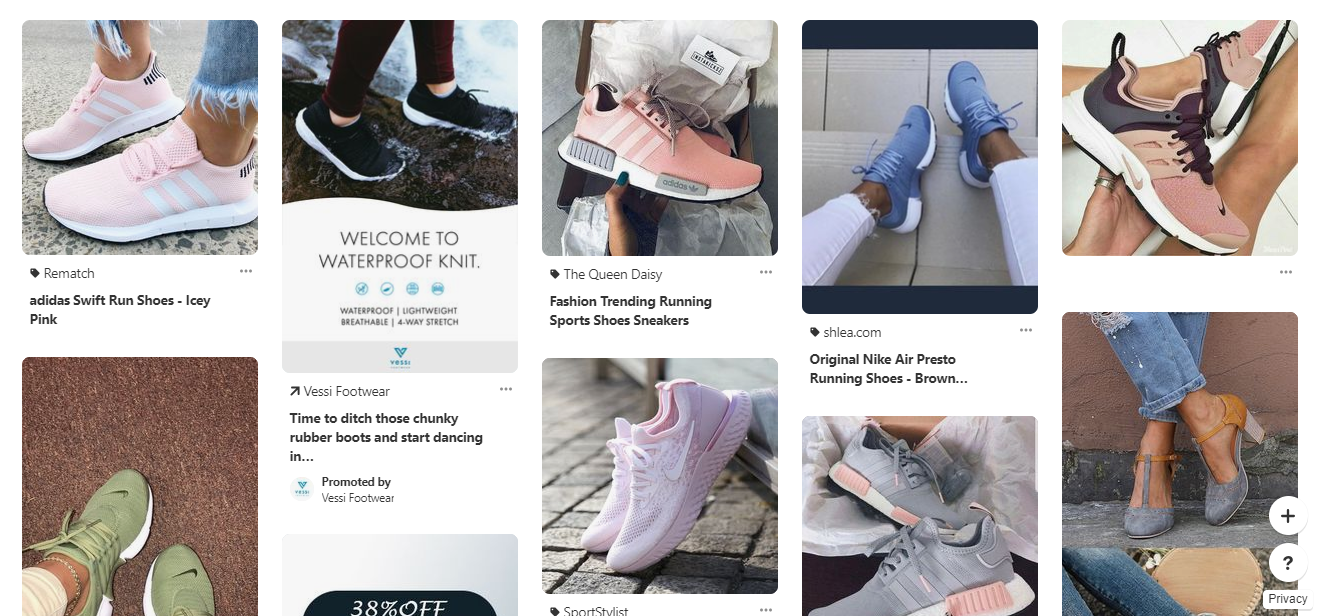
Once they’re satisfied with their find, they pin the image to an applicable board to come back to later:
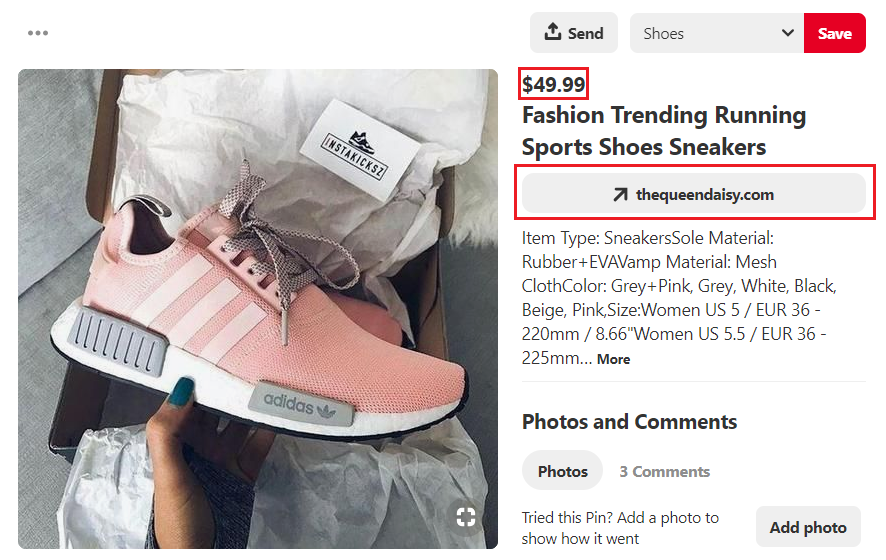
Or they can head over to the retailer’s product page to find out if there are any special offers, if their size is available, what other styles are in stock, and more.
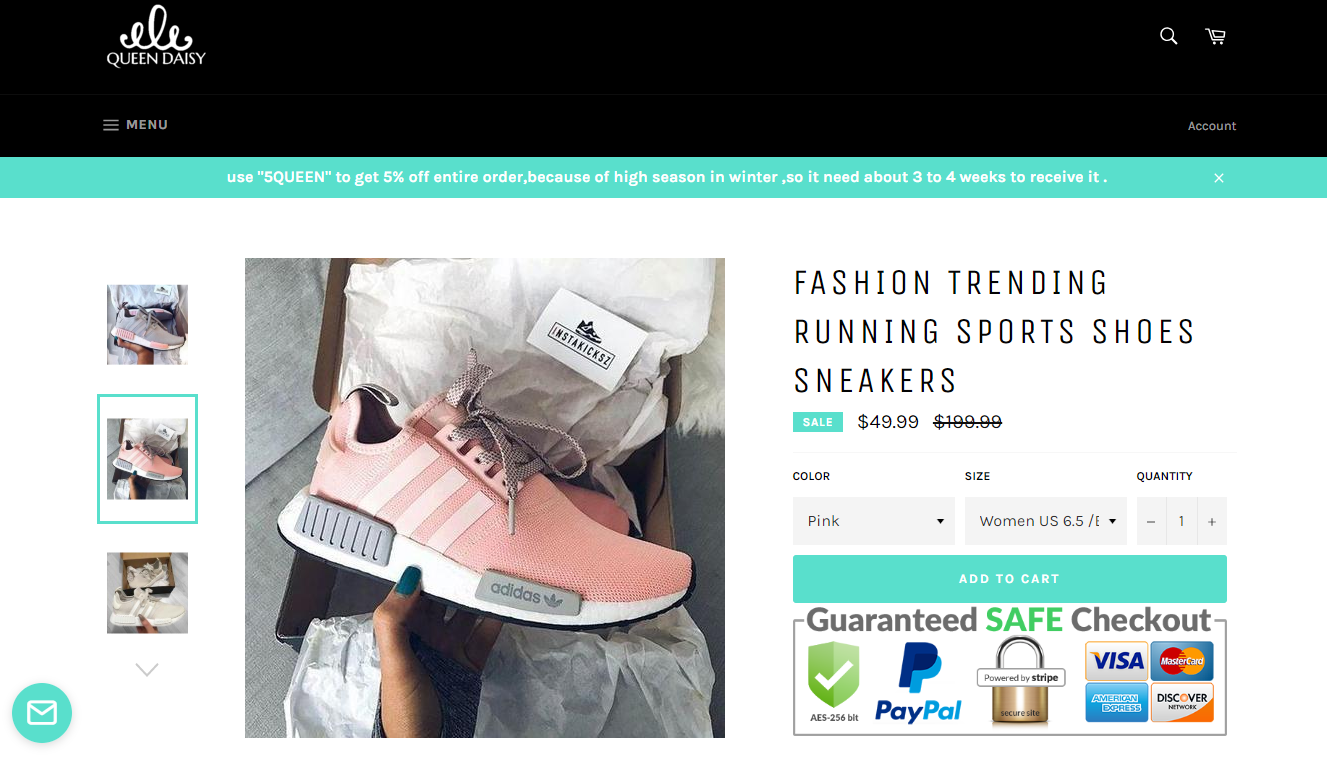
This browsing and pinning is especially important to users in the consideration stage of their customer journey — after all, 87% of users have bought a product because of Pinterest.
Before users buy, they want to compare similar products quickly without visiting lots of different websites — just one or two. Instead of searching online stores they know about to find exactly what they’re looking for, Pinterest users can instead find what they’re looking for first and then find the store. This opens the door to discovering more online stores than users would have otherwise.
To get started with Pinterest for business, create a business account. The main benefit of having a business account is it gives you access to analytics and ads. As you add more boards and content to your account, you can track data — like which Pins get the most view or engagement — and create ads to get your Pins in front of more people.
Once you’ve created your account, write a bio for your profile, include a link to your website, add a logo image, and set up a few boards:
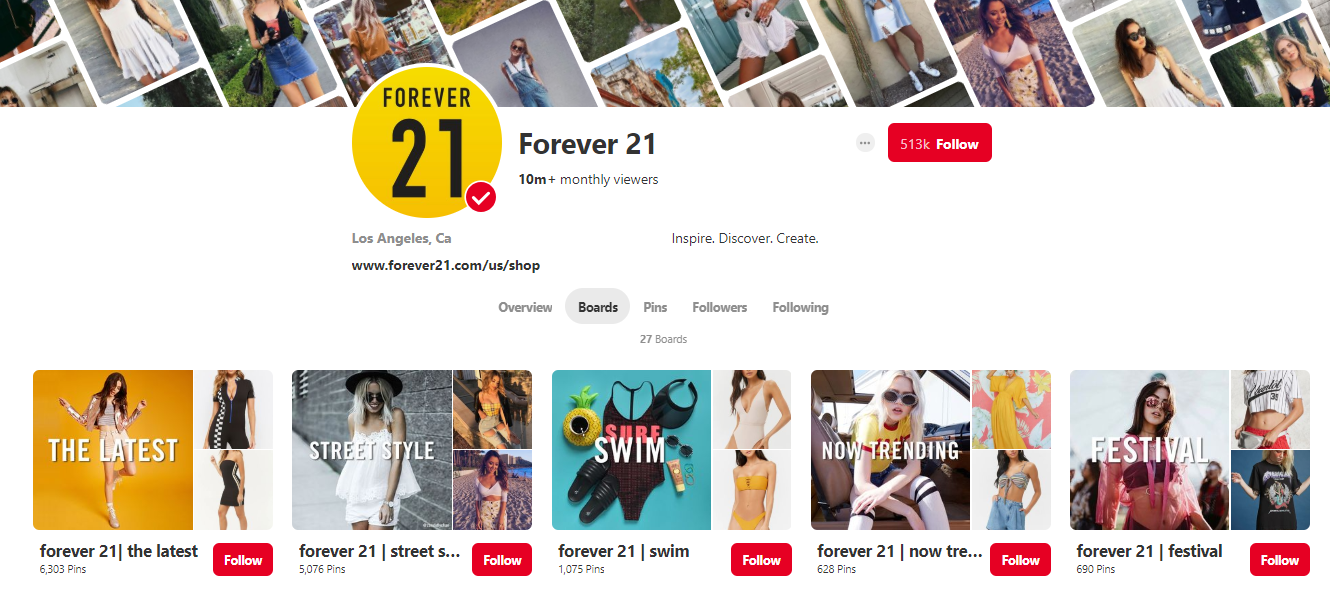
[Source: Forever 21]
What’s great about Forever 21’s page is it caters to their main demographic, millennial women. Forever 21 categorizes each of its boards to match how customers search its site. Plus, Forever 21 puts all of its product boards first — so its products are easy to find when new users visit the page. You’ll also notice further down the homepage that Pins are more about general interest topics than apparel and accessories.
Now that we’ve covered the main benefits of using Pinterest and how to get started, let’s look at how to use Pinterest for ecommerce to increase sales.
1. Add share Pins to your product pages
One of the many ways customers learn more about your products is by spending time on your website. As customers click through your products pages, use this opportunity to invite them to follow you on Pinterest so they can share your products with their network.
Simply add Pin buttons to appear on all of your product images:
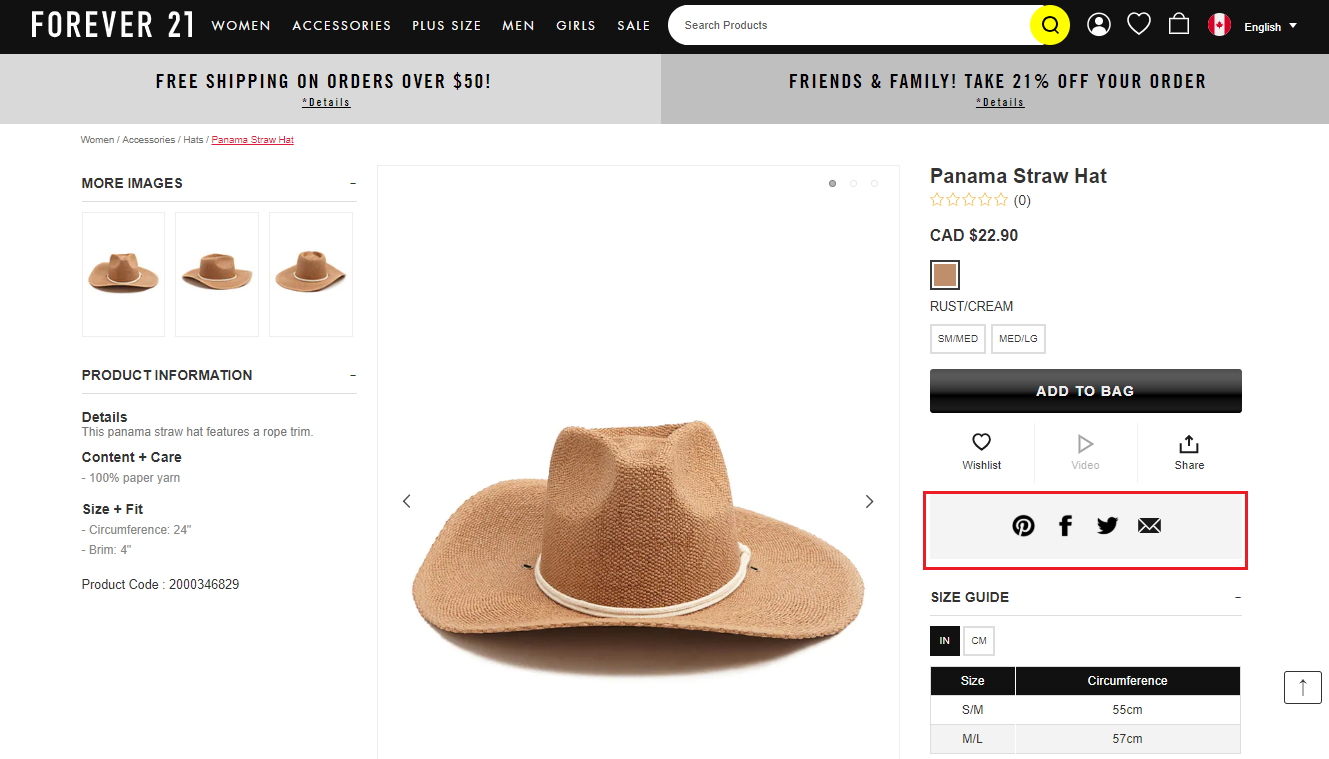
[Source]
When customers click on the link, they’re taken to Pinterest where they can save and share the products they’ve found:
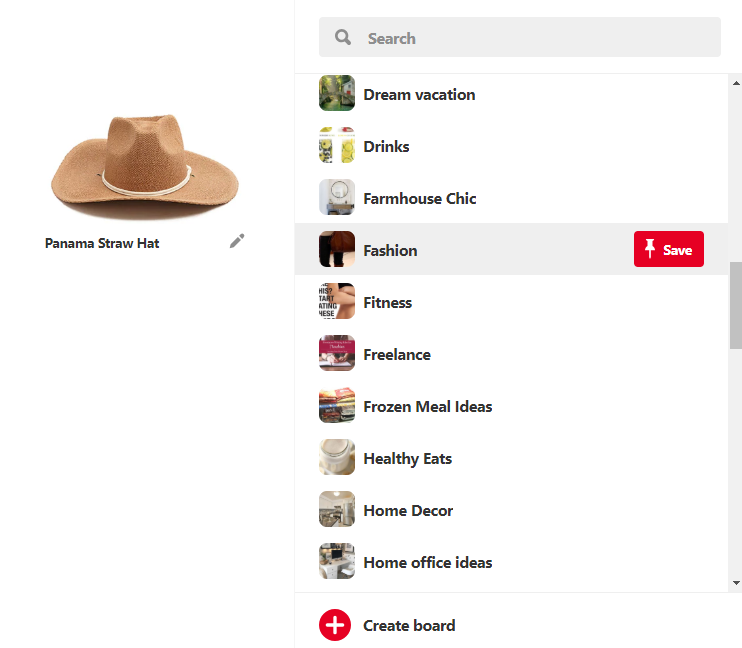
This strategy increases your exposure to a larger audience that might not have found you otherwise.
If your online store is hosted on WordPress, use widgets like the ones below to automatically add a Pin button to all of your product pages.

To increase clicks, add a call to action (CTA) on your product pages that says something along the lines of “See something you like but not quite ready to buy? No problem! Click the Pin button to save it on Pinterest.”
With your business account, use analytics to see which types of products get the most Pins and traffic on your Pinterest page. Then go one step further and share Promoted Pins on your page that include these products. This will help boost sales on your website since 50% of users purchase products after seeing a Promoted Pin.
2. Add ‘Shop the Look’ Pins
Pinterest is constantly evolving to meet the changing needs of its users. One recent change is the introduction of Shop the Look Pins. When users click on fashion and home decor Pins, white dots appear on the images to indicate that the items can be purchased on Pinterest:
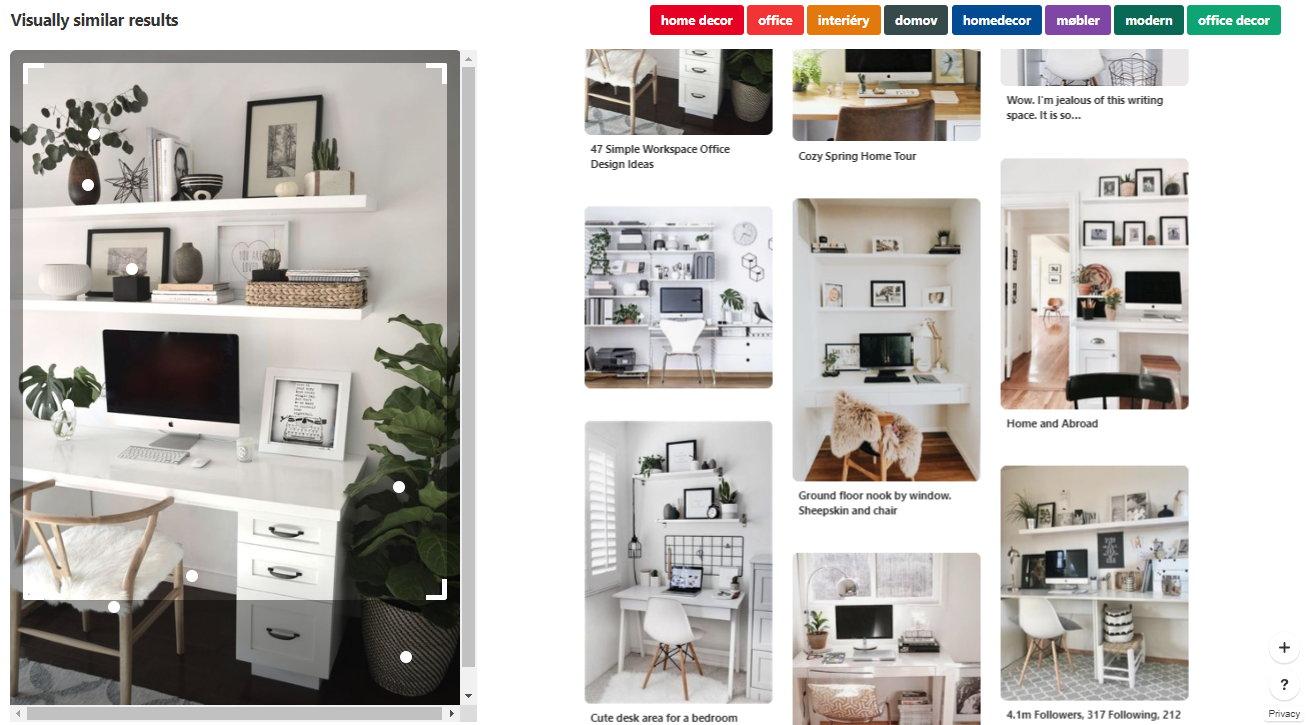
There’s a resizeable overlay that appears that lets users zero in on the product they’re interested in. If the user zeros in on the chair, for example, similar chairs appear on the right for them to browse through:
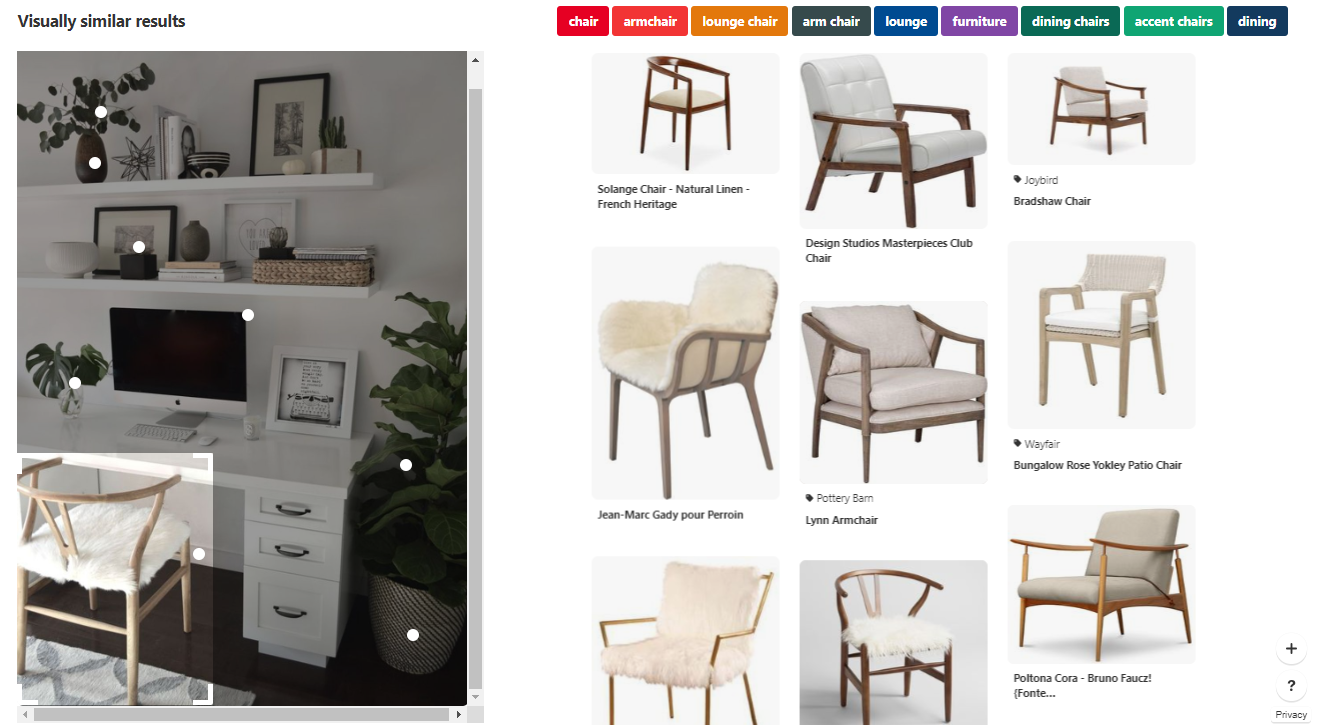
Ninety-eight percent of users buy products they see on Pinterest, but they have to leave the site to do so. With Shop the Look pins users see a product they like, they can stay where they are and buy what they see without leaving Pinterest.
This seamless customer experience speeds up the buying process because instead of visiting multiple websites to compare products and prices, customers can comparison-shop in one place.
To get started with Shop the Look Pins, use Pinterest’s tagging tool to create your Pins. As you create new Pins, you simply tag each of your images with links that take users to your product pages. If you’re a larger ecommerce retailer, you can use Curalate or Olapic to create Pins on a larger scale.
Whichever route you choose, you still get the revenue from these purchases even though they come through Shop the Look Pins. Just process sales as you normally would and follow up with customers once their purchase is ready to ship and deliver.
Keep in mind that Shop the Look Pins are especially useful for users who like to create boards and pin content they’ll revisit later. For example, users can create boards that focus on gifts for their family or products for their home. Users can start their search on Pinterest and then go to your website for more information. This is helpful, considering the majority of people research online before they buy.
3. Use alternating content formats
Pinterest is essentially a visual search engine that encourages the discovery of new information. Since there are millions of images to scroll through, you have to be strategic about how you share visuals. One way to do this is to vary the type of images you share.
For example, users might start looking for ideas on shoes for an upcoming event, but based on their interests and previous searches, your domain quality, and pin quality, additional images appear that users want to explore more. Your products have a better chance of grabbing user attention when they’re different from the images around them.
Marketers believe that “Visual content is essential for customer retention. Visual content can foster better understanding and reduce confusion for readers who took the time to read your post. Visual content is simply more stimulating than any other form of communication. The brain processes visual information 60,000 times faster than text.”
To get more leads, move users through the sales funnel quicker, do something different than the competition, and categorize the type of content you’ll share on Pinterest. For example, you can share:
- Blog posts to give researching users more in-depth information to explore
- Product updates to highlight new product releases
- Videos to show users how a product works
Total Wine, an online wine retailer, uses different types of content formats to showcase its business and products:
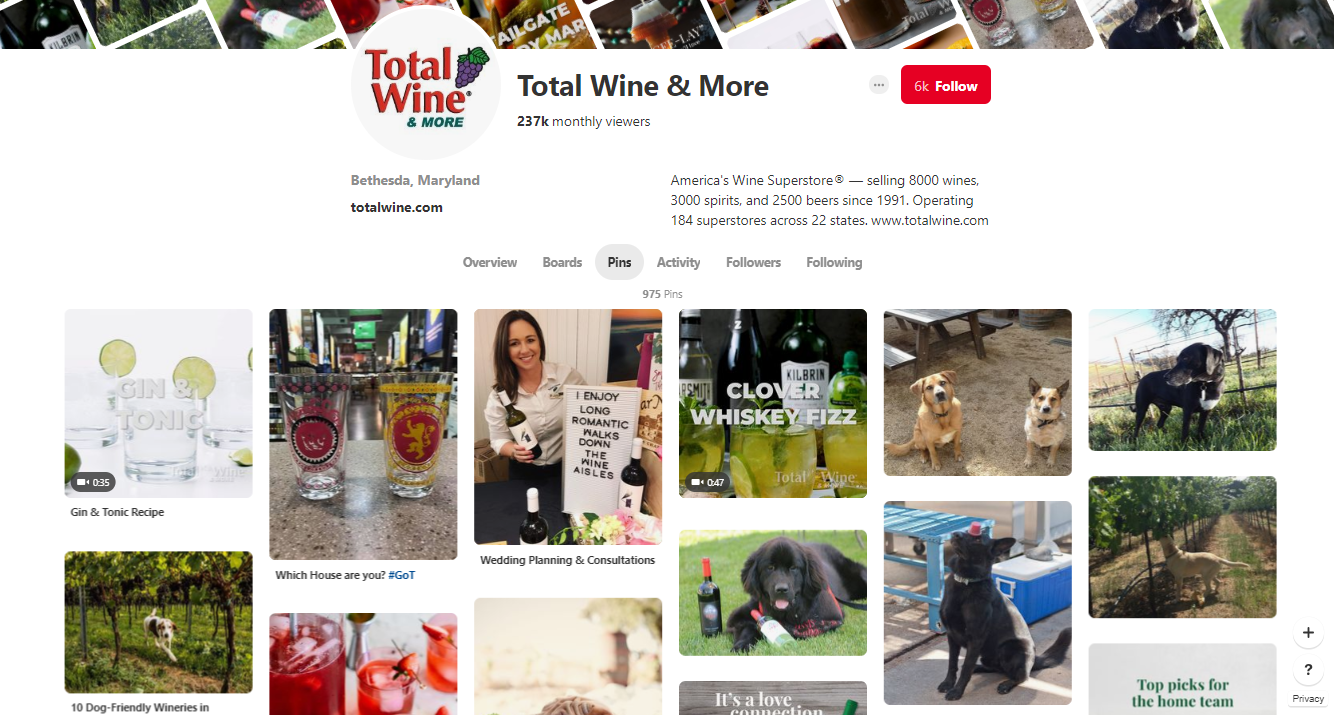
[Source: Total Wine]
Notice how they use a combination of product images, videos, and lifestyle pictures to create their brand voice and to educate their followers. This is a great approach because the videos share recipes that show users how to create cocktails with Total Wine’s product. Since customers can’t touch and feel a product or ask a sales rep questions, mini video tutorials do a good job of explaining the different ways to use the product.
4. Share complementary Pins
Just like your product pages, or even your blog, your Pinterest boards have to be updated frequently to keep users coming back. The key, however, is to share more than just your own products and content. This doesn’t mean you have to resort to sharing your competitors’ pins, but rather content that supports or shows the value you and your products offer.
Pinning content that goes beyond the scope of your products shows your audience what’s important to you and what you value—besides making sales. If your values match your audiences, they’re more likely to buy something.
Online retailer 6pm sells discounted merchandise through their online store. However, their Pinterest page also includes boards that highlight lifestyle topics that interest their audience:

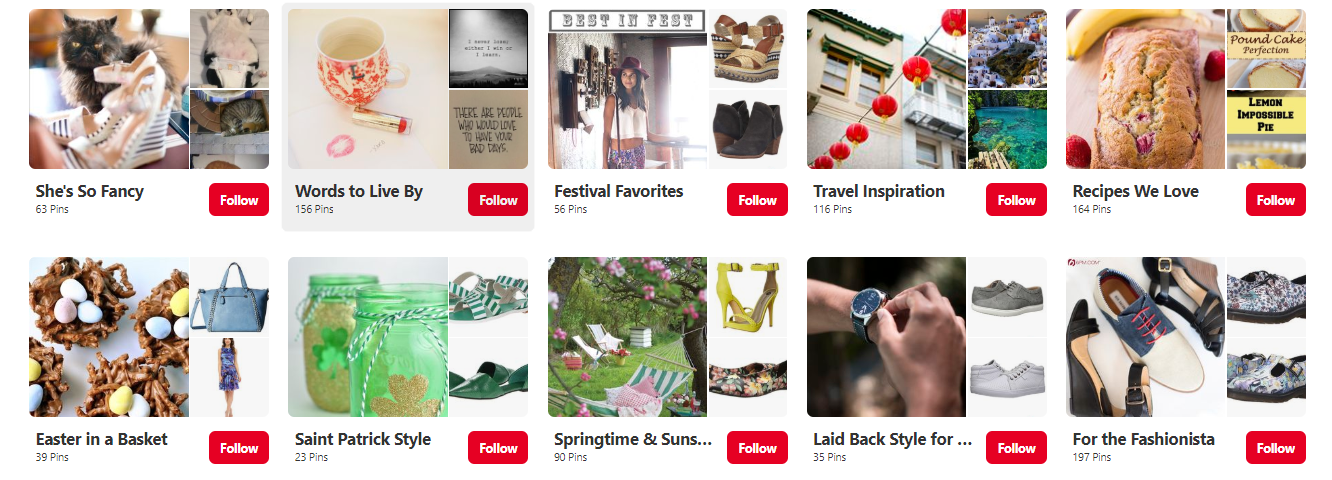
[Source: 6 pm]
They post about crafting, travel, and recipes, which are all topics that offer different types of value.
Posting beyond your product scope seems like such a small thing, but 75% of customers want to do business with companies that have the same beliefs and values as they do. Get to know your audience by talking to them or surveying them to understand what’s important to them and make sure you share your insights and values with them.
5. Write SEO optimized descriptions
Just like with Google searches, search engine optimization (SEO) needs to be a part of your Pinterest for ecommerce strategy. When used right, Pinterest can send up to 7.53% of its traffic to your website. While referral traffic from a platform like Facebook is on the decline, Pinterest has seen more growth in referral traffic than any other social platform:
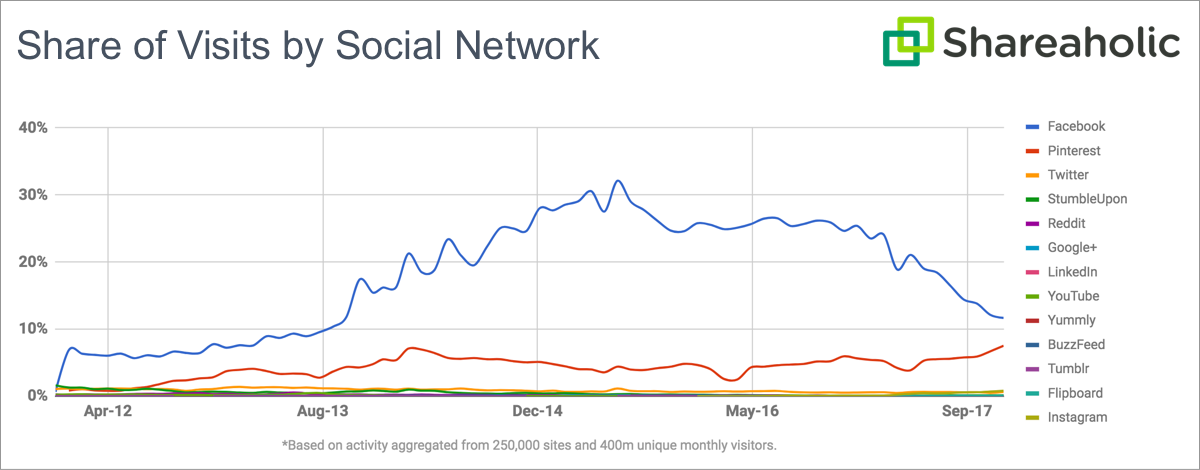
[Source]
To generate as much referral traffic as possible, do some research to figure out what keywords your audience searches for. Once you have a list, create a keyword strategy for Pinterest that includes the types of images you’ll pin and which keywords you’ll use with each type. For example, if you sell tea online, use keywords that correspond with each type— like iced tea and black tea — so that it’s easier for people to find what they’re looking for.
Incorporate your keywords in your Pin descriptions and your board titles. Molly and Me Pecans sells baked goods online. Based on what their audience searches for, they change keywords accordingly.
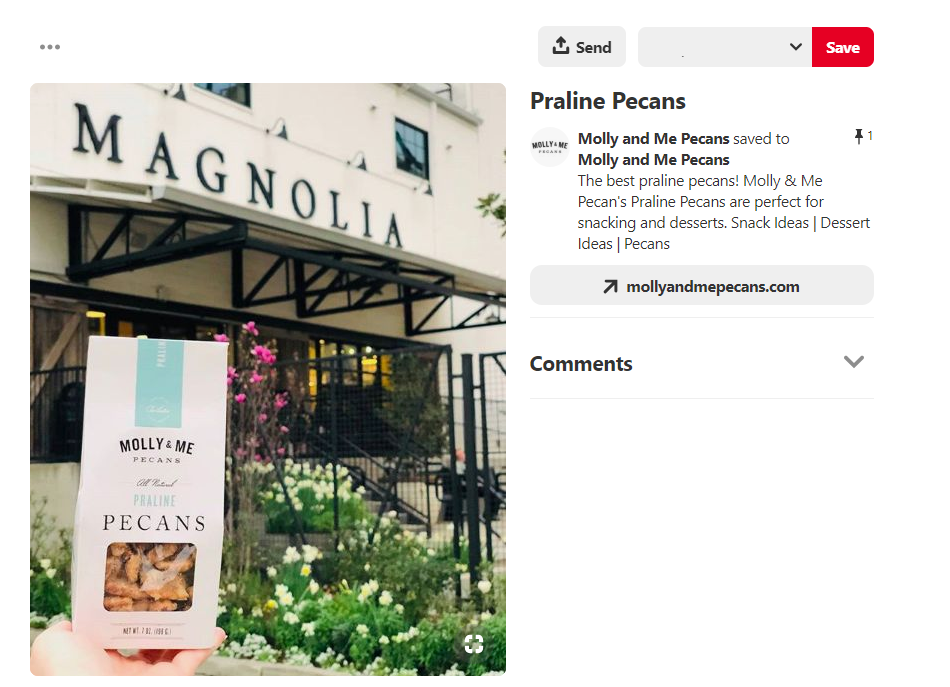
[Source: Molly and Me Pecans]
This particular Pin is for their Praline Pecan product. “Praline Pecans” is mentioned in the Pin title and the description, which improves the chances of it appearing when users use this search term. Don’t stuff your descriptions with keywords, either. You want your Pins to cater to user readability, not just to Pinterest’s algorithm.
To find keywords, use tools like Google Keyword Planner or Ahrefs. You can even use the “Create an Ad” feature to find keywords used on Pinterest. Start by clicking the red cross at the top right corner of any page:
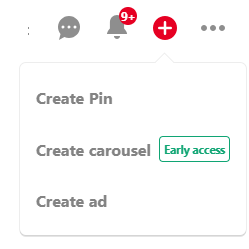
Click “Create ad” and select any Pin. Instead of actually creating an ad, use the “target audience” feature to find keywords that are already in use on the platform.
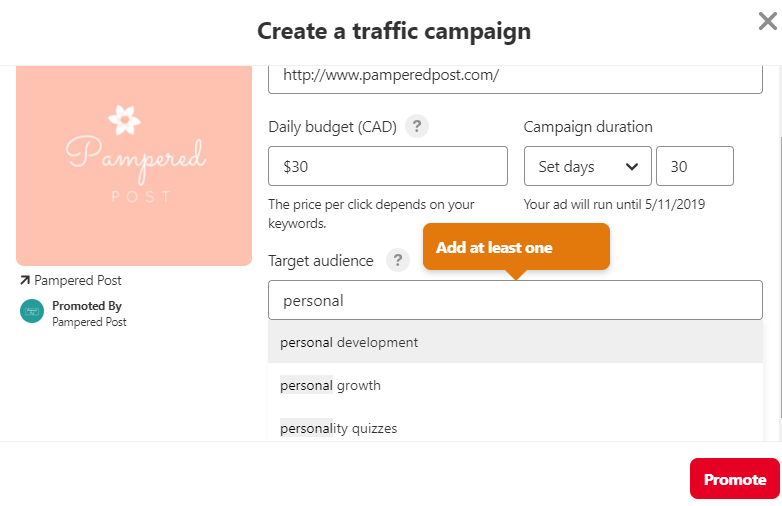
Also, research and include one or two hashtags within your Pin descriptions. This increases the relevance ranking of your Pins — the measure of how close your Pins match user search intent — and helps them appear higher up in your audience’s feed.
Consider the future of Pinterest for ecommerce
Pinterest has only been around for nine short years and it’s already seen a considerable amount of change. Because of the image-sharing nature of the platform, it’s easier than ever for online retailers to get exposure and generate more traffic to their site.
Unlike with brick-and-mortar stores, customers shopping online don’t have the luxury of chatting with a sales associate to get a feel for you and a sense of whether your products will be a good fit. And since your website can only cover so much information, take advantage of the features Pinterest offers to create brand awareness.
Also, to make Pinterest for commerce work for you, create a Pinterest strategy that includes appealing images shared in different formats. When done right, Pinterest can become a place where new leads find you and use your boards to discover the value you offer.
Digital & Social Articles on Business 2 Community
(101)
Report Post